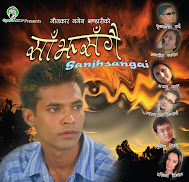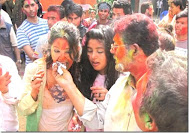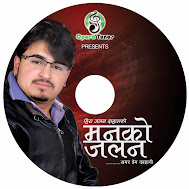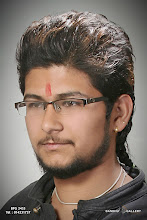Featured articles

Etiam tincidunt lobortis massa et tincidunt. Vivamus commodo feugiat turpis, in pulvinar felis elementum vel. Vivamus mollis tempus odio, ac imperdiet enim adipiscing non. Nunc Read More ...

Proin ac leo eget nibh interdum egestas? Aliquam vel dolor vitae dui tempor sollicitudin! Integer sollicitudin, justo non posuere condimentum, mauris libero imperdiet urna, a Read More ...

Etiam ultrices felis sed ante tincidunt pharetra. Morbi sit amet orci at lorem tincidunt viverra. Donec varius posuere leo et iaculis. Pellentesque ultricies, ante at Read More ...
In the 1860s, mechanisms for producing two-dimensional drawings in motion were demonstrated with devices such as the zoetrope, mutoscope and praxinoscope. These machines were outgrowths of simple optical devices (such as magic lanterns) and would display sequences of still pictures at sufficient speed for the images on the pictures to appear to be moving, a phenomenon called persistence of vision. Naturally the images needed to be carefully designed to achieve the desired effect, and the underlying principle became the basis for the development of film animation.
With the development of celluloid film for still photography, it became possible to directly capture objects in motion in real time. An 1878 experiment by English photographer Eadweard Muybridge in the United States using 24 cameras produced a series of stereoscopic images of a galloping horse, is arguably the first "motion picture", though it was not called by this name.[1] This technology required a person to look into a viewing machine to see the pictures which were separate paper prints attached to a drum turned by a handcrank. The pictures were shown at a variable speed of about 5 to 10 pictures per second, depending on how rapidly the crank was turned. Commercial versions of these machines were coin operated.
A frame from Roundhay Garden Scene, the world's earliest film produced using a motion picture camera, by Louis Le Prince, 1888
By the 1880s the development of the motion picture camera allowed the individual component images to be captured and stored on a single reel, and led quickly to the development of a motion picture projector to shine light through the processed and printed film and magnify these "moving picture shows" onto a screen for an entire audience. These reels, so exhibited, came to be known as "motion pictures". Early motion pictures were static shots that showed an event or action with no editing or other cinematic techniques. The first public exhibition of projected motion pictures in America was shown at Koster and Bial's Music Hall in New York City on the 23rd of April 1896.
Ignoring Dickson's early sound experiments (1894), commercial motion pictures were purely visual art through the late 19th century, but these innovative silent films had gained a hold on the public imagination. Around the turn of the 20th century, films began developing a narrative structure by stringing scenes together to tell narratives. The scenes were later broken up into multiple shots of varying sizes and angles. Other techniques such as camera movement were realized as effective ways to portray a story on film. Rather than leave the audience with noise of early cinema projectors, theater owners would hire a pianist or organist or a full orchestra to play music that would cover noises of projector. Eventually, musicians would start to fit the mood of the film at any given moment. By the early 1920s, most films came with a prepared list of sheet music for this purpose, with complete film scores being composed for major productions.
A shot from Georges Méliès Le Voyage dans la Lune (A Trip to the Moon) (1902), an early narrative film.
The rise of European cinema was interrupted by the outbreak of World War I when the film industry in United States flourished with the rise of Hollywood, typified most prominently by the great innovative work of D. W. Griffith in The Birth of a Nation (1914) and Intolerance (1916). However in the 1920s, European filmmakers such as Sergei Eisenstein, F. W. Murnau, and Fritz Lang, in many ways inspired by the meteoric war-time progress of film through Griffith, along with the contributions of Charles Chaplin, Buster Keaton and others, quickly caught up with American film-making and continued to further advance the medium. In the 1920s, new technology allowed filmmakers to attach to each film a soundtrack of speech, music and sound effects synchronized with the action on the screen. These sound films were initially distinguished by calling them "talking pictures", or talkies.
The next major step in the development of cinema was the introduction of so-called "natural color", which meant color that was photographically recorded from nature rather than being added to black-and-white prints by hand-coloring, stencil-coloring or other arbitrary procedures, although the earliest processes typically yielded colors which were far from "natural" in appearance. While the addition of sound quickly eclipsed silent film and theater musicians, color replaced black-and-white much more gradually. The pivotal innovation was the introduction of the three-strip version of the Technicolor process, which was first used for short subjects and for isolated sequences in a few feature films released in 1934, then for an entire feature film, Becky Sharp, in 1935. The expense of the process was daunting, but continued favorable public response and enhanced box-office receipts increasingly justified the added cost. The number of films made in color slowly increased year after year.
In the early 1950s, as the proliferation of black-and-white television started seriously depressing theater attendance in the US, the use of color was seen as one way of winning back audiences. It soon became the rule rather than the exception. Some important mainstream Hollywood films were still being made in black-and-white as late as the mid-1960s, but they marked the end of an era. Color television receivers had been available in the US since the mid-1950s, but at first they were very expensive and few broadcasts were in color. During the 1960s, prices gradually came down, color broadcasts became common, and the sale of color television sets boomed. The strong preference of the general public for color was obvious. After the final flurry of black-and-white film releases in mid-decade, all major Hollywood studio film production was exclusively in color, with rare exceptions reluctantly made only at the insistence of "star" directors such as Peter Bogdanovich and Martin Scorsese.
Since the decline of the studio system in the 1960s, the succeeding decades saw changes in the production and style of film. Various New Wave movements (including the French New Wave, Indian New Wave, Japanese New Wave and New Hollywood) and the rise of film school educated independent filmmakers were all part of the changes the medium experienced in the latter half of the 20th century. Digital technology has been the driving force in change throughout the 1990s and into the 2000s.
FOR COMPLETE INFORMATION CLICK HERE
A film, also called a movie or motion picture, is a series of still or moving images. It is produced by recording photographic images with cameras, or by creating images using animation techniques or visual effects. The process of filmmaking has developed into an art form and industry.Films are cultural artifacts created by specific cultures, which reflect those cultures, and, in turn, affect them. Film is considered to be an important art form, a source of popular entertainment and a powerful method for educating — or indoctrinating — citizens. The visual elements of cinema give motion pictures a universal power of communication. Some films have become popular worldwide attractions by using dubbing or subtitles that translate the dialogue into the language of the viewer.Films are made up of a series of individual images called frames. When these images are shown rapidly in succession, a viewer has the illusion that motion is occurring. The viewer cannot see the flickering between frames due to an effect known as persistence of vision, whereby the eye retains a visual image for a fraction of a second after the source has been removed. Viewers perceive motion due to a psychological effect called beta movement.The origin of the name "film" comes from the fact that photographic film (also called film stock) has historically been the primary medium for recording and displaying motion pictures. Many other terms exist for an individual motion picture, including picture, picture show, moving picture, photo-play and flick. A common name for film in the United States is movie, while in Europe the term film is preferred. Additional terms for the field in general include the big screen, the silver screen, the cinema and the movies.
NTC - 0170007716, NCELL - 6037861, UTL - 7243849
LIFESTYLE
A Presentation of Cinema Sansar
A Film by Mr. Vijay Raj
Produced by Mr.Lal chand Prasad
music/Arrange : Rajendra Kibachhan
song : Dinesh Subedi
Vocal: bishwosanta Rai/Bimala Thapa
Mixing : Bishan Manandhar
Recording Studio : Harmonic Digital Studio
shooting Studio : KB Films
Camera : Sagar Gautam
Production manager : Umesh Poudel
special Thanks
Dayaram Dahal
Binod Manandhar
Bikram Thapa









































